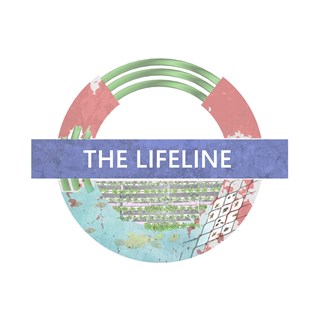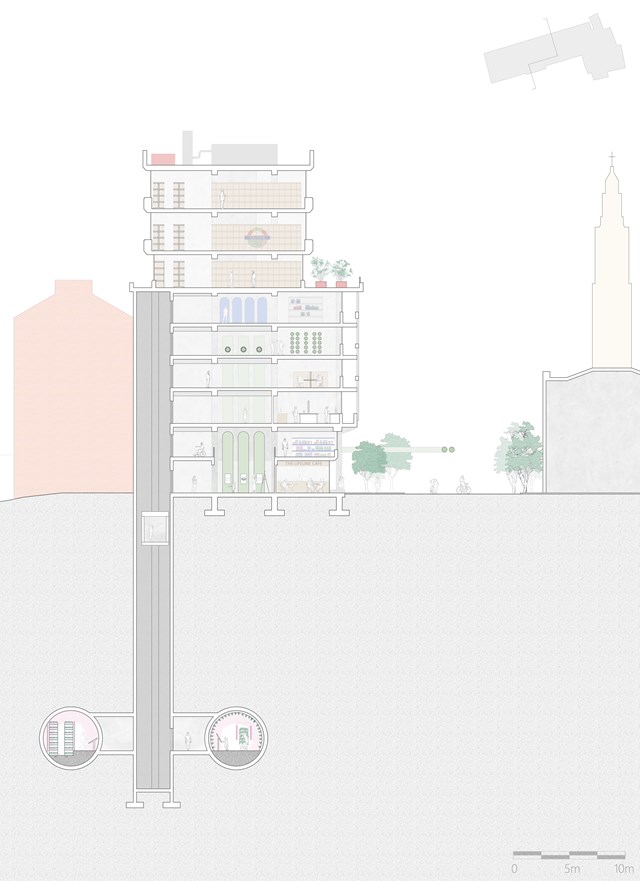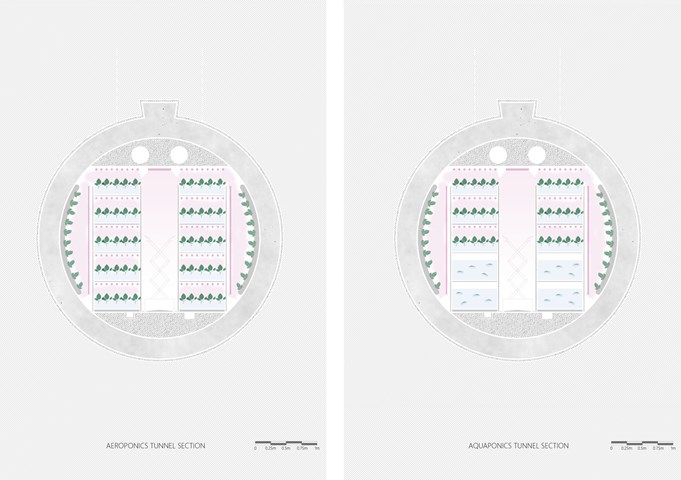The Lifeline
Introducing vertical farming concepts into London's forgotten infrastructure
Food, a primordial need of ours that has shaped our lives over the years, now poses the biggest threat to the future of our planet. Vertical farming systems, that not only produce food sustainably but also bring us closer to food and its production are the need of the hour. London’s extremely complex food system relies heavily on imports and unsustainable food production methods. The resultant disconnect between Londoners and their food has had a severe knock-on effect on social, psychological and dietary issues. In 2018, the Mayor of London put forward a strategy that placed food at the heart of addressing the city’s challenges and stressed on the importance of new food technologies. The Lifeline responds to these challenges by introducing vertical farming concepts into the city’s disused tunnels, abandoned buildings and Tube stations. At the heart of this network, is a circular, zero-waste food production system that thrives on the flow of materials and waste products between four food groups that would be prevalent in our future diets. It is a carbon neutral project that runs on power generated from the heat that is dissipated by the existing Tube network. The scope of the project transcends the technological challenges and ventures into social and cultural avenues. The Lifeline is envisioned as a new line in London’s Underground network and a necessary catalyst for creating a healthier, more sustainable and self-sufficient city.
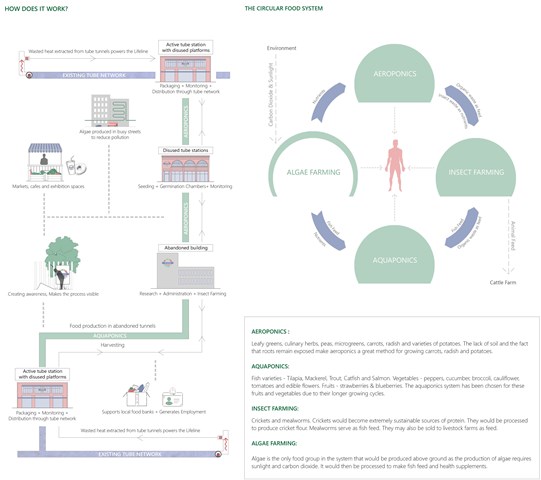
Fundamentals of The Lifeline
‘The Lifeline’ acknowledges London’s vast portfolio of abandoned infrastructure as an opportunity and an important medium for addressing the urgency at hand. At the heart of the project is a circular, zero-waste food production system that thrives on the flow of materials and waste products between the four food groups – Aeroponics, Aquaponics, Insect Farming and Algae Farming. These have been identified as four food groups that would be prevalent in our future diets based on research carried out in the 5A publication. While the abandoned tunnels provide controlled environments that are vital for aeroponic and aquaponic systems, the retrofitted buildings serve as physical manifestations of ‘The Lifeline’ at the surface and accommodate research centres, insect farming facilities, administrative offices as well as social and educational areas for public use. The controlled growing environments in tunnels and the associated systems in stations are made in a modular fashion so that they would be able to adapt to modern food trends and advancements in technology. The heat generated by the existing tube network, which would otherwise be lost to the environment is harnessed to power The Lifeline. This makes it possible to produce food with no reliance on conventional sources of energy. Moreover, algae tubes installed in the streets help remove excess carbon dioxide in the atmosphere.
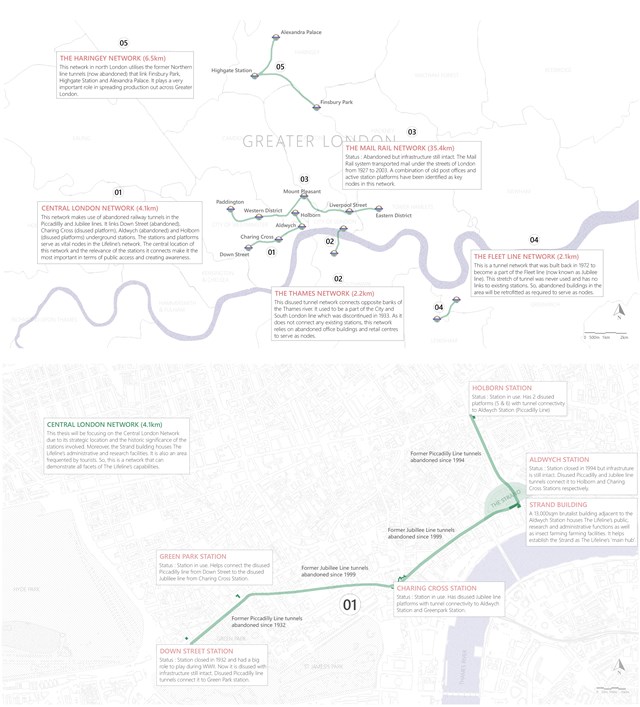
The Lifeline Network
The Lifeline consists of 5 distinct underground tunnel networks dotted across Greater London that are linked via the existing London Underground infrastructure. The produce that is grown in these networks is transported across the city at night using the Tube lines and is also made available at key Tube stations, markets and cafes. The whole tunnel network extends for 50.3km, producing 17,605 tons of produce annually - fruits and vegetables for over 45,000 UK households and fish for almost 100,500 households. Notably, the network replaces 4600 hectares of traditional, unsustainable farmland which could have produced carbon emission equivalent to that of 2200 households. Moreover, The Lifeline also produces insects, generates employments for thousands of people and supports 10 local foodbanks.
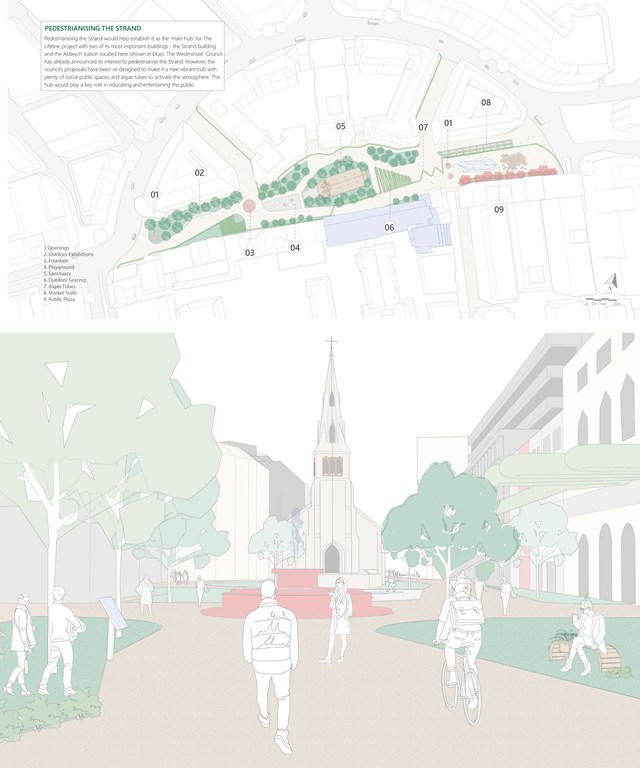
Pedestrianising the Strand
The Strand building and Aldwych station are located in the famous Strand in London, a place that is historically significant and is frequented by locals and tourists alike. Pedestrianising the Strand expands opportunities for the public to interact with The Lifeline. The newly pedestrianised street would have markets, plazas, social areas, exhibitions and opportunities for the public to get a glimpse of food production in the tunnels. This is consistent with Westminster city council’s vision to remove vehicular traffic from the area by the end of this year.
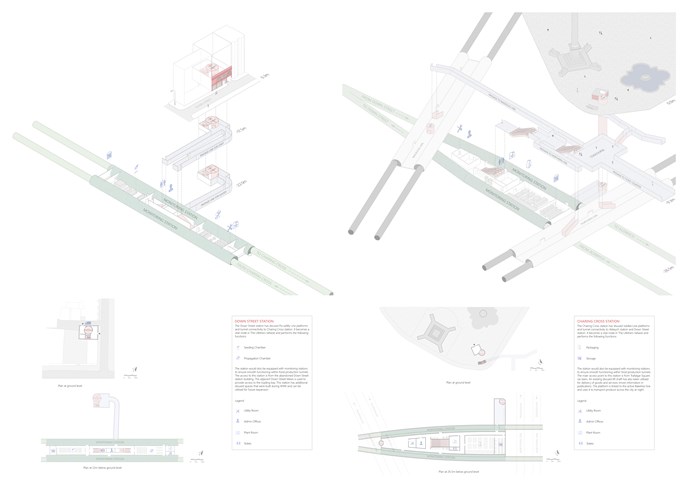
The Stations
Down Street – abandoned station takes care of seeding and germination processes. Charing Cross – active station takes care of packaging and storage. It also helps link The Lifeline to the Tube network (in this case, to the Bakerloo line).
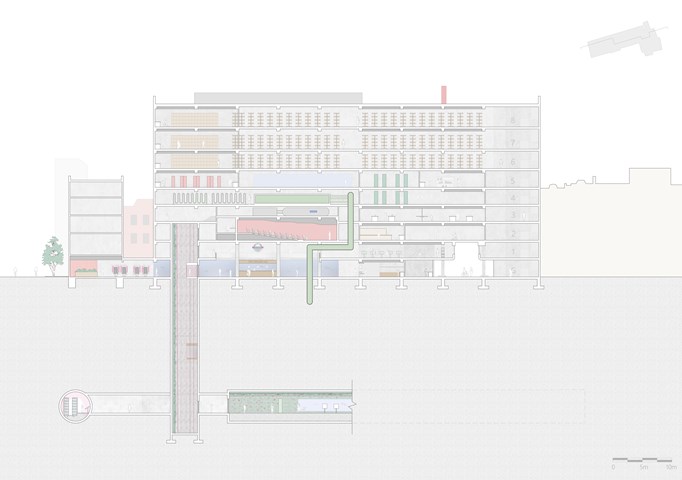
Longitudinal Section through The Lifeline HQ
This section illustrates the connections between The Lifeline HQ and the abandoned tube tunnels below. The tunnels accommodate a public exhibition space (tunnel) and a fine-dining restaurant. The tunnels are accessed via capsule lifts that take users through a vertical exhibition (lift shaft).
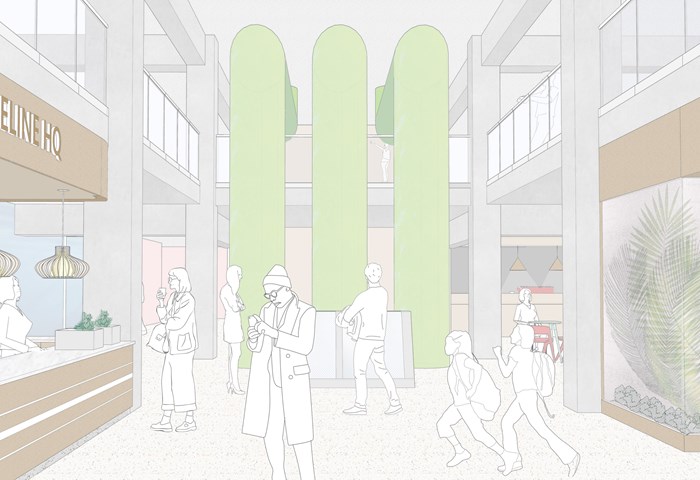
The Lifeline HQ
This visual shows how the interiors of The Lifeline HQ capture all the different food production groups in one space and serve as a portal for the pubic to experience them.
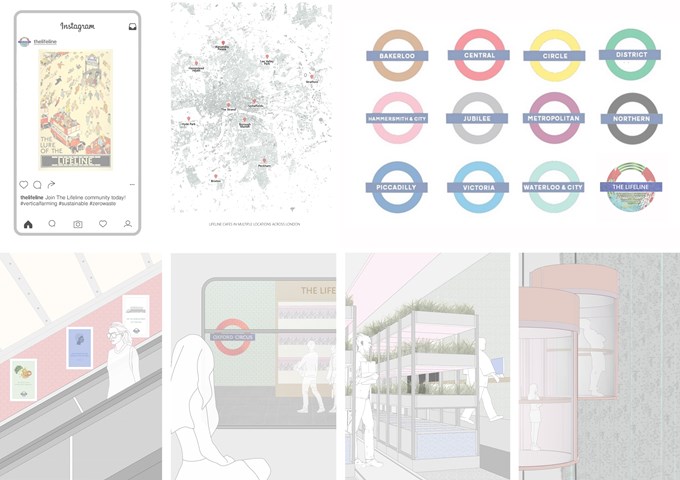
Integration into everyday life
These visuals show how The Lifeline becomes an integral part of the daily lives of over 2 million Londoners who use the Tube everyday. The innovative and sustainable food production methods are manifested outside the hubs by means of vending machines at busy Tube stations, Lifeline cafes dotted across London, as well as posters and visual media. Social media plays a crucial role in educating the younger generation as well.
